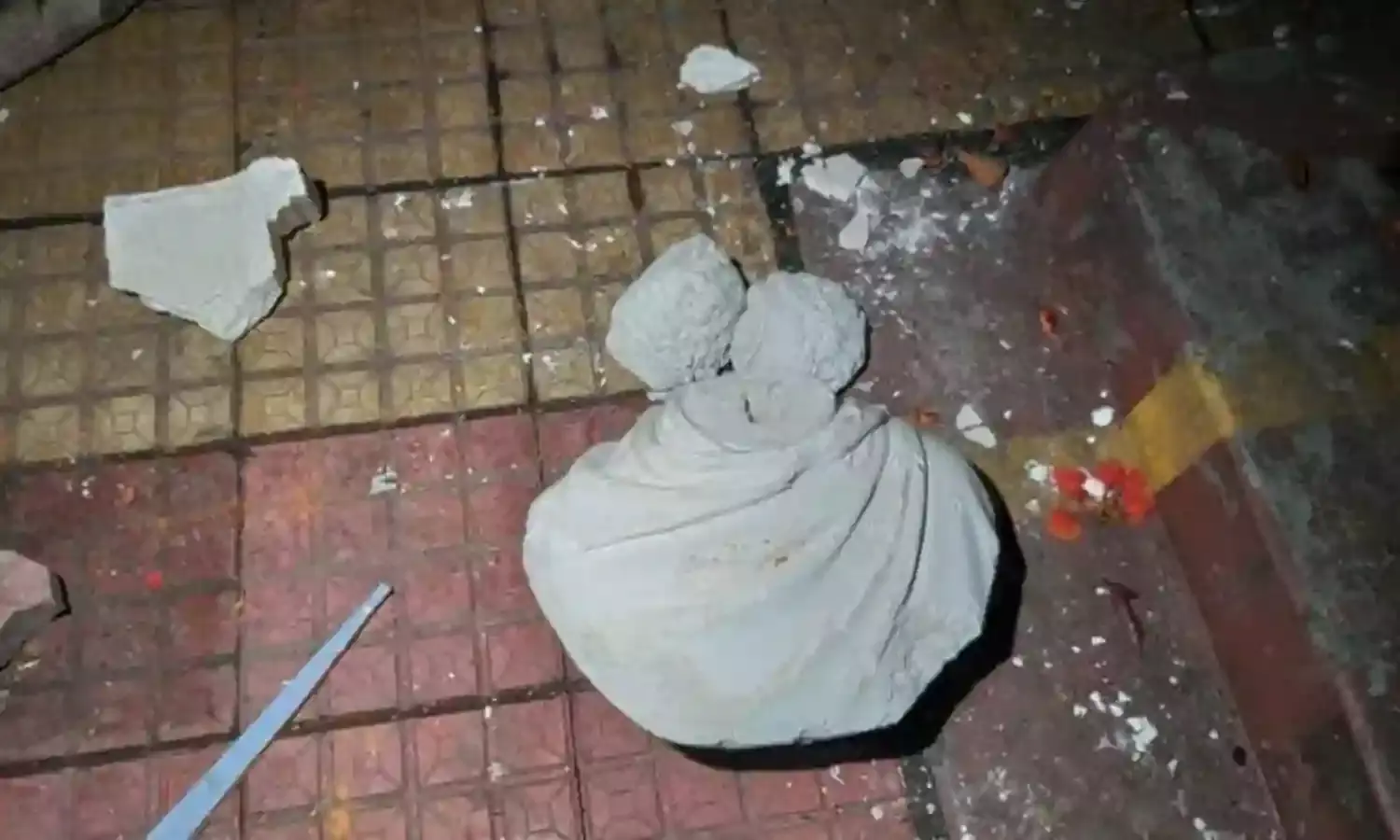The Attack on Vidyasagar's Statue: What Exactly is at Stake in West Bengal
The primitiveness of BJP-TMC culture

The 2019 elections in Bengal make visible the long term strategy of the Hindutva forces, and the Bharatiya Janata Party (BJP), to dismantle the progressive culture of Bengal that was actively established in three decades of Left front rule.
This work of dismantling progressive Bengali culture has been strategically enabled by Mamata Banerjee and her Trinamool Congress (TMC).
What both these reactionary right-wing parties have in common is their ideology of hierarchy, sponsorship of violence, silencing of dissent, and hatred of progressive socio-political thought. Both these parties are united in their targeting of the Left parties.
Both the BJP and the TMC are run by cult-like personalities that disavow learning, attack educational institutions, dismiss critical thinking, and have been accused of making-up their credentials. Contrast them with the former Chief Minister of West Bengal and leader of the Communist Party of India (Marxist) Jyoti Basu, trained at Presidency and later at the London School of Economics. Consider similarly another CPI(M) leader Somnath Chatterjee, with similar pedagogical training at Presidency and Cambridge.
The attack on Vidyadagar College in Kolkata during an Amit Shah rally and the desecration of a statue of Ishwarchandra Vidyasagar, the iconic figure of Bengal renaissance, is reflective of the primitive culture of the Hindutva ideology. Based on regressive notions anchored in binaries, the Hindutva ideology paradoxically is the greatest threat to an overarching ethos of Indian culture.
Vidyasagar as a Bengali icon
One of the many Vidyasagar stories my mother read to me in the years of growing up was the story of Vidyasagar’s love for learning. This story narrated how he would spend many hours sitting underneath the streetlight as his family could not afford a gaslight at home.
Vidyasagar, meaning “a sea of knowledge,” a title accorded to him by the Sanskrit College of Calcutta for his excellent performance in Sanskrit studies and philosophy, is a pivotal figure in the Bengal renaissance. During his nine-year long studies at Sanskrit college, he immersed himself in a wide range of subjects from Sanskrit Grammar and Literature to Dialectics (Alankara Shastra) and Astronomy, graduating in these subjects. At the age of twenty one, Ishwarchandra joined Fort William College as the Head of the Sanskrit department in 1841. As an educator, Vidyasagar started pursuing reforms in the education system.
Every Bengali child is introduced to his “Borno Porichoy,” the collection of Bengali alphabets, with an image of Vidyasagar adorning its cover. Vidyasagar had simplified and made accessible the Bengali alphabet to the everyday Bengali.
The reform of education actively pursued by Vidyasagar was complemented by active social reform. He advocated for widow remarriage in Bengal, seeking to challenge orthodox Hinduism from within. Widow remarriage was one of many progressive transformations that formed the architecture of the Bengal renaissance.
The culture of hooliganism in Bengal and the BJP
The eight years of TMC rule in West Bengal has seen the steady rise in hooliganism, supported and sponsored by the TMC. This culture of hooliganism is rooted in the strategic use of violence to silence protest and critique.
Alongside the culture of hooliganism, Mamata Banerjee and the TMC have actively promoted the Hindutva forces as a political strategy. Consider for instance the sudden and accelerated growth of the RSS training camps across West Bengal.
This support for Hindutva has been accompanied by her support for Islamic fundamentalist forces, all worked into a strategy crafted to keep the Left at bay.
The attack on the statue of Vidyasagar is a natural culmination of this reactionary right-wing politics. The BJP-led hooliganism in West Bengal in full display in the recent past and the specific tactics of hate politics are at their heart antithetical to the secular and progressive spirit that reflected Bengali society in the three decades of Left front rule. The desecration of the statue of Vidyasagar should be a wake-up call for every Bengali about the threat that is posed by this backward-looking culture of hate and violence.
That both the TMC and the BJP are interweaving matrices of this culture of regression is a cautionary pointer to what exactly is at stake in Bengal in 2019.


